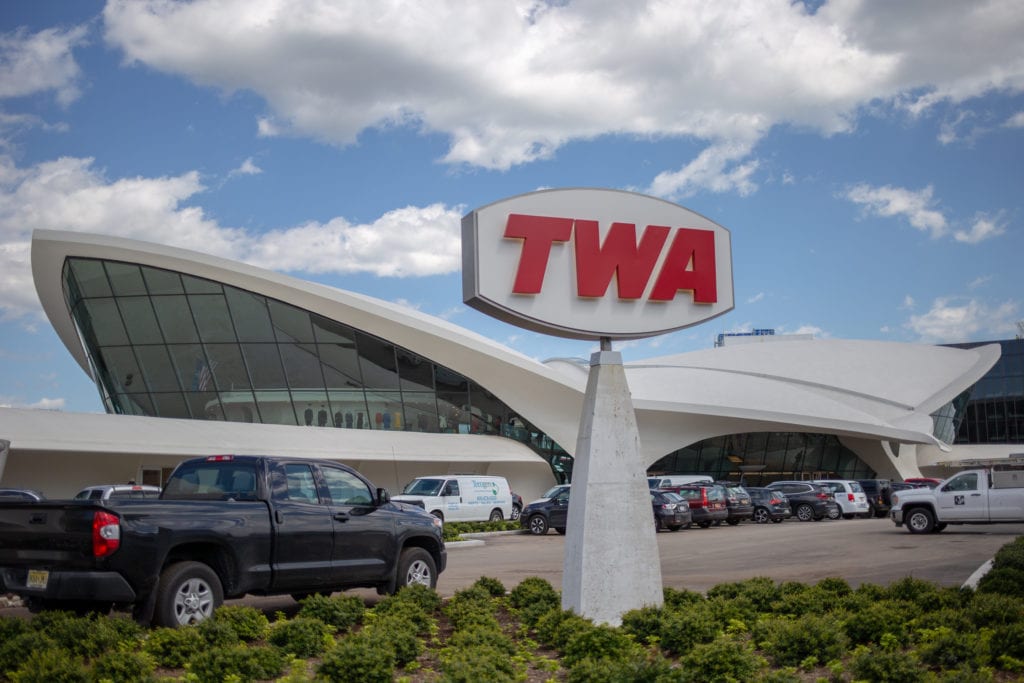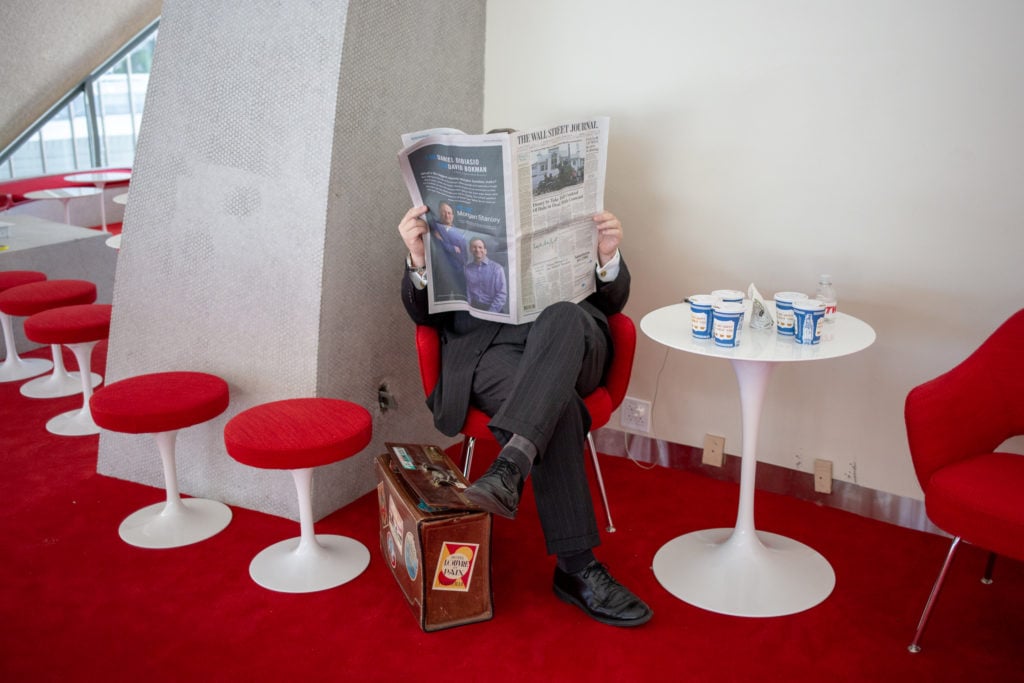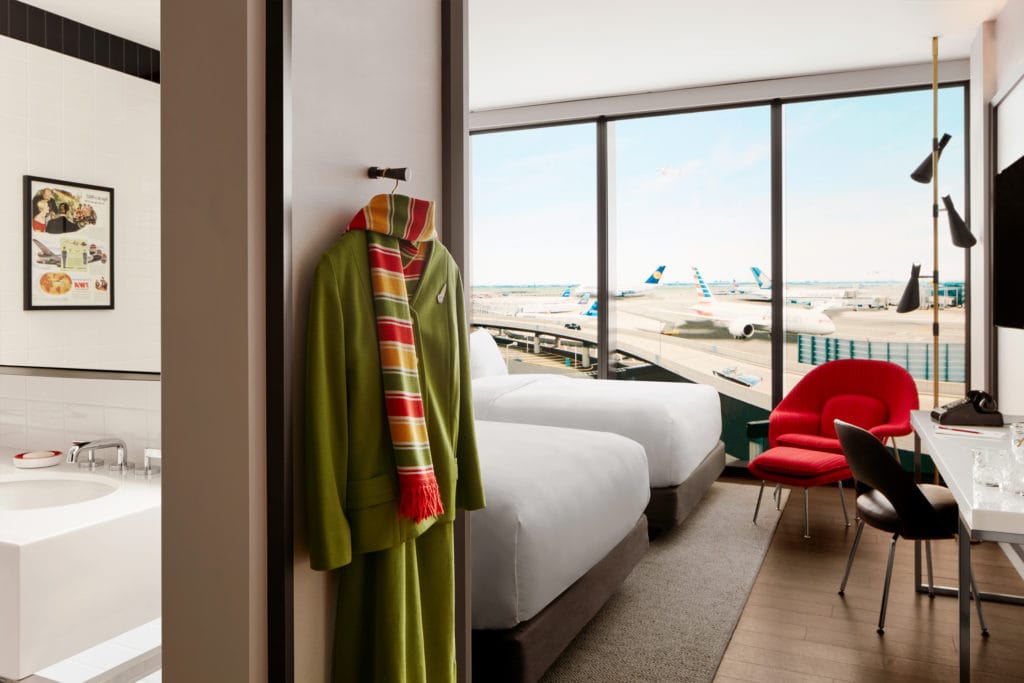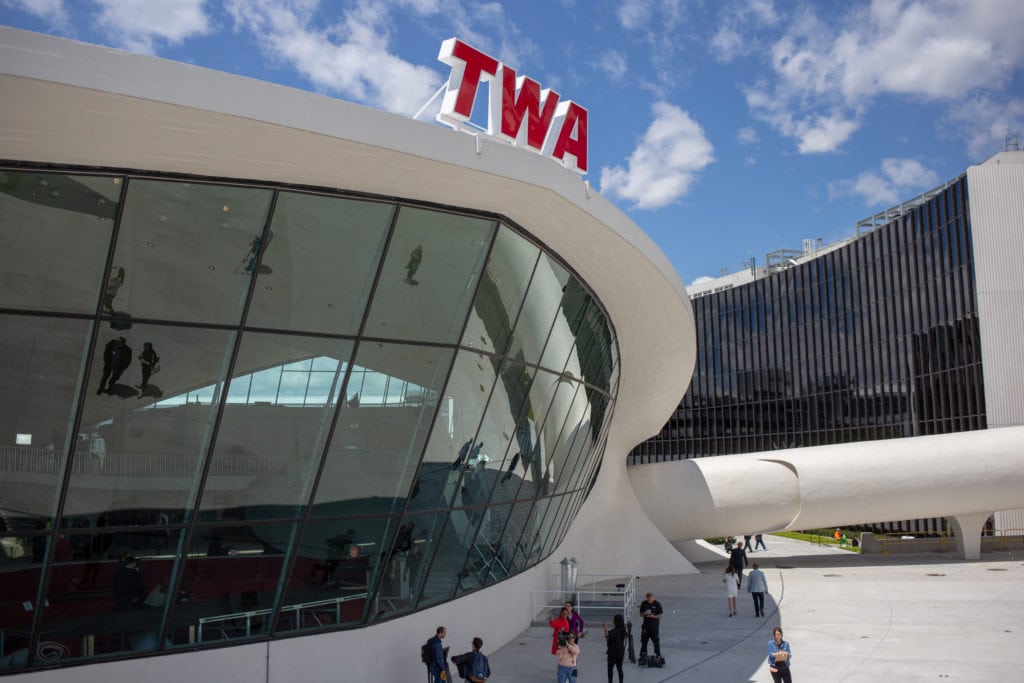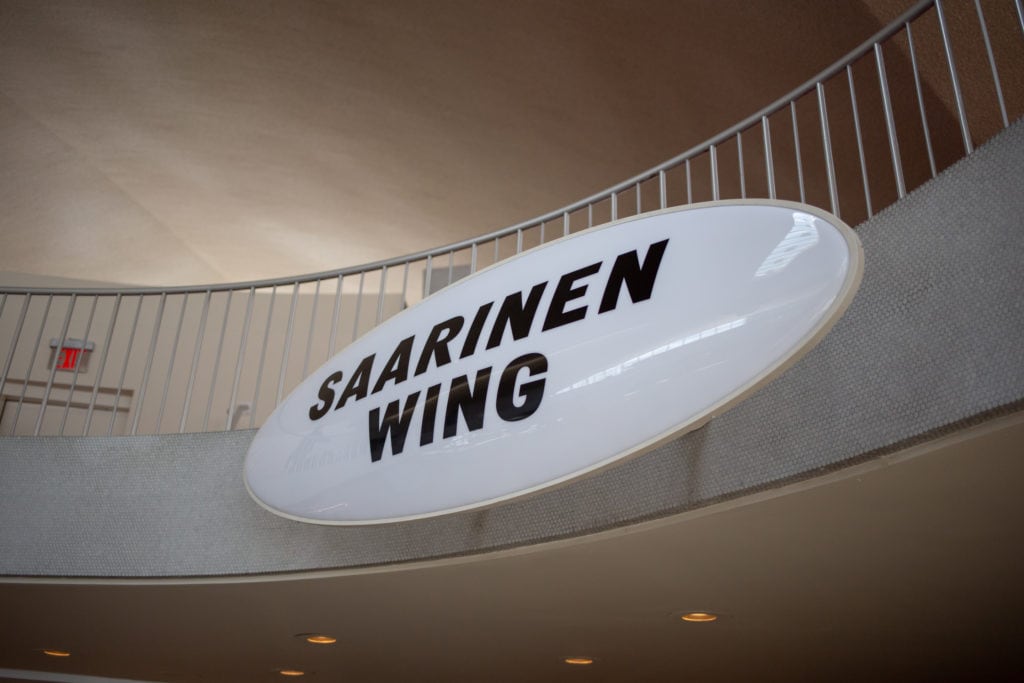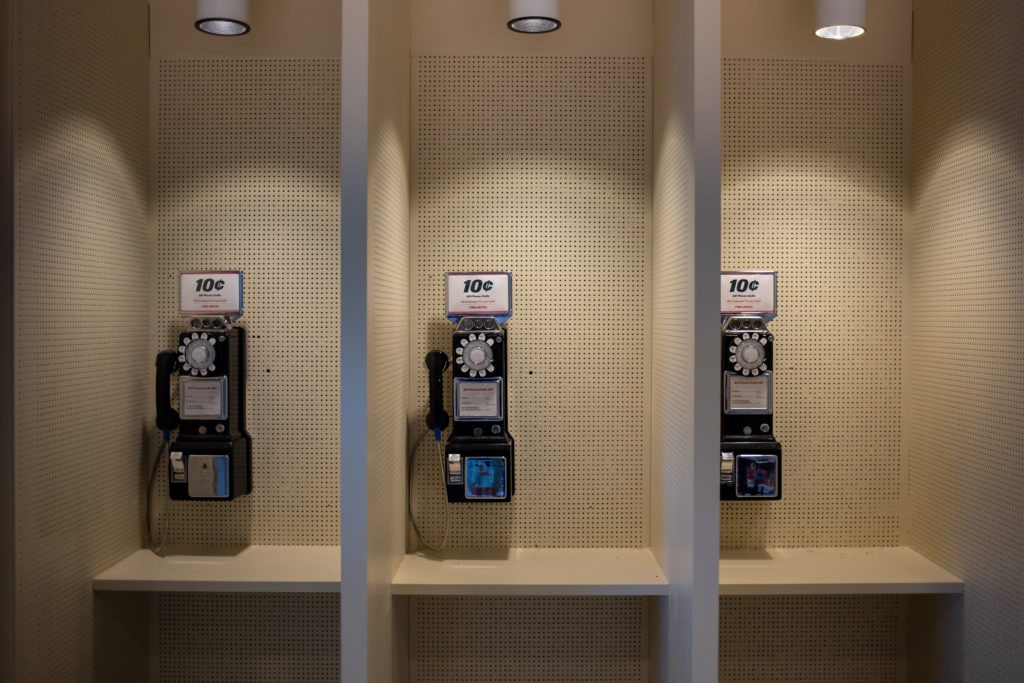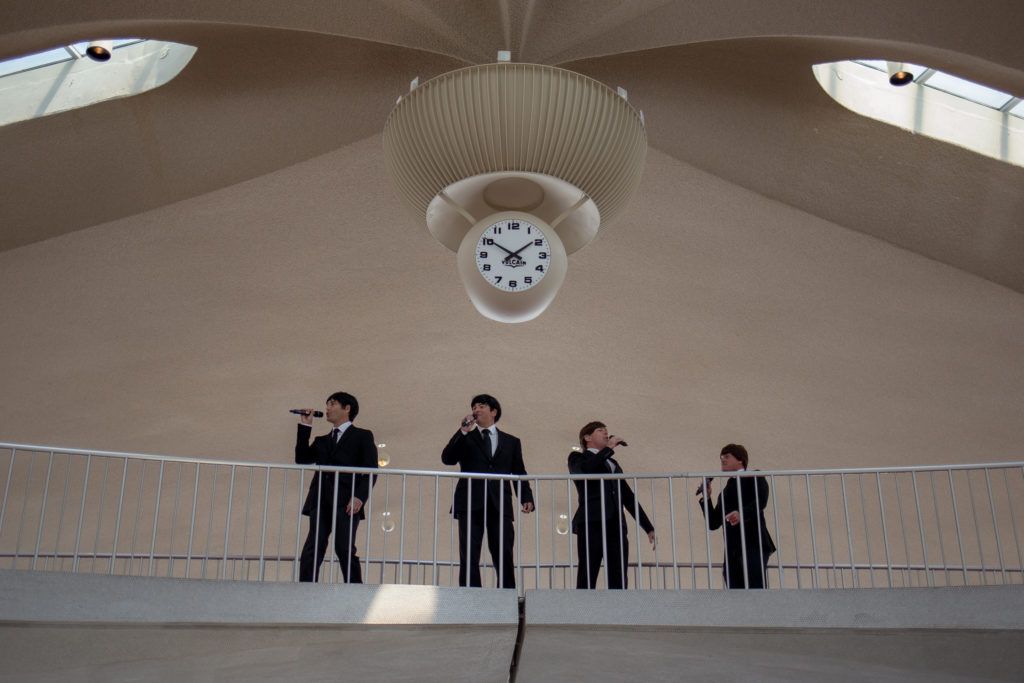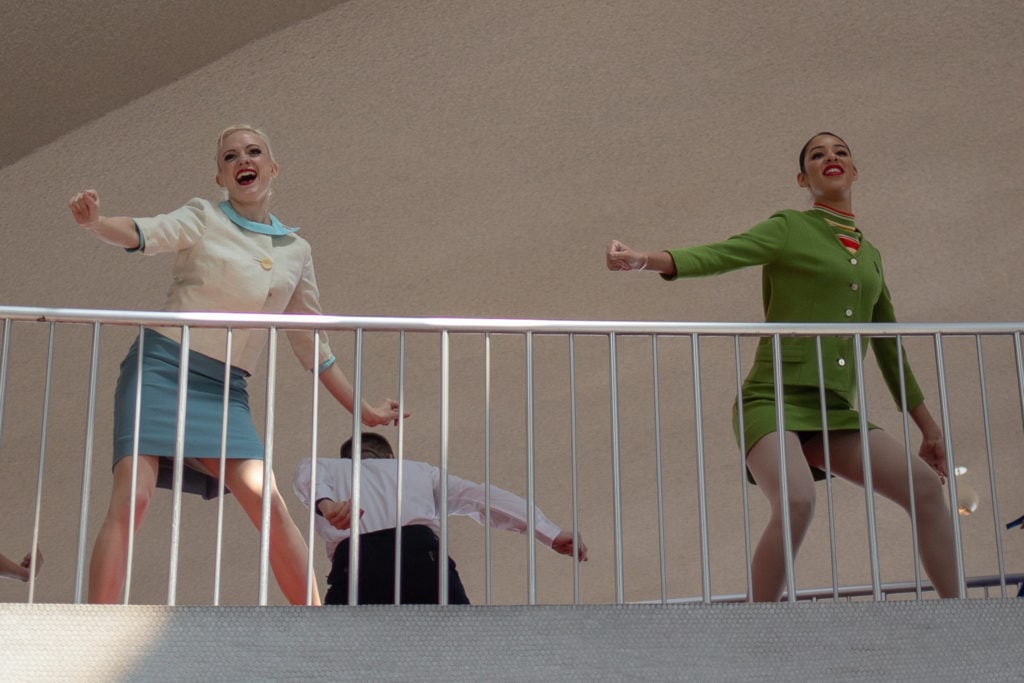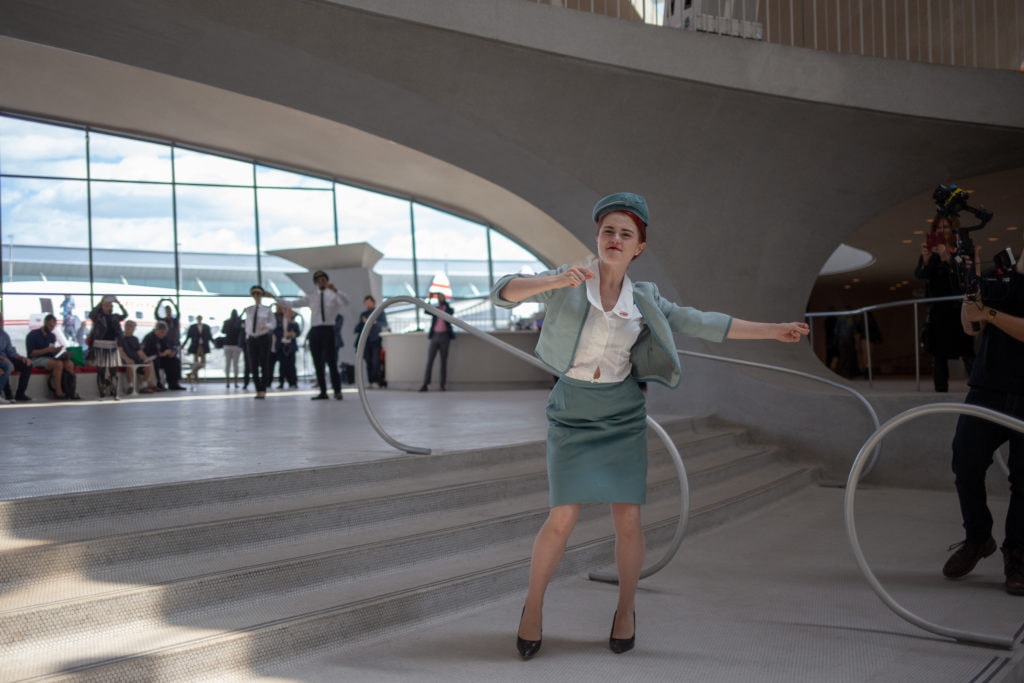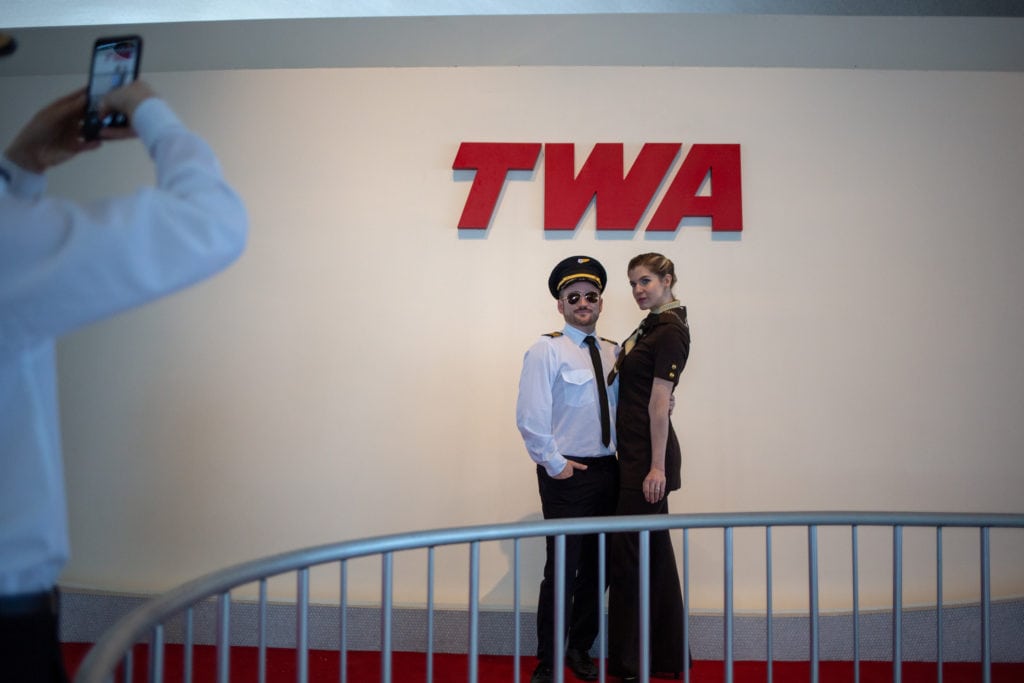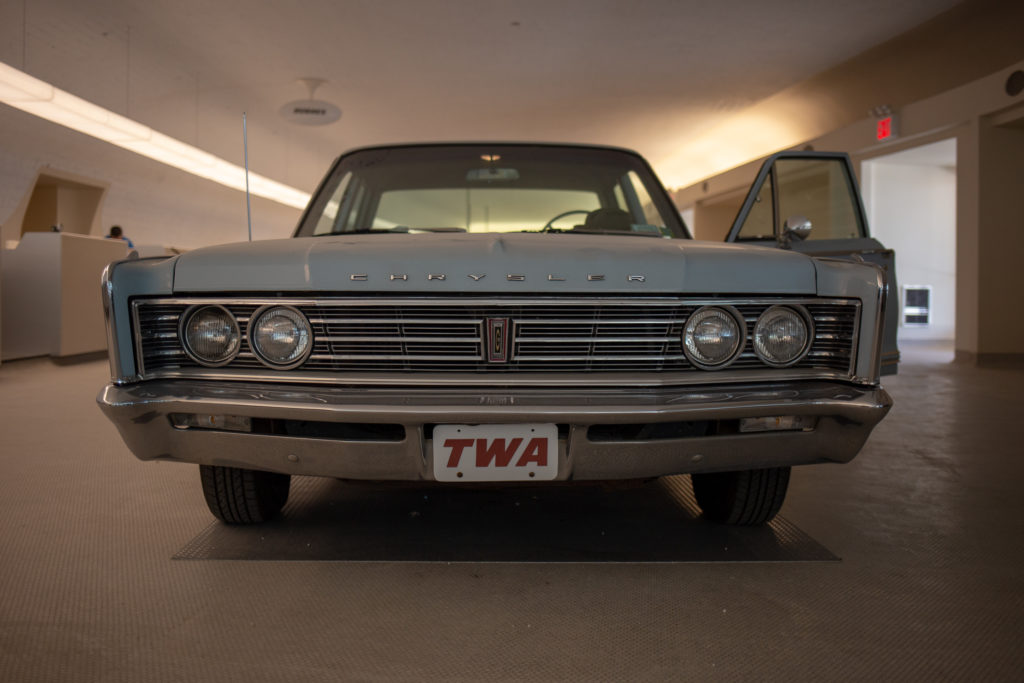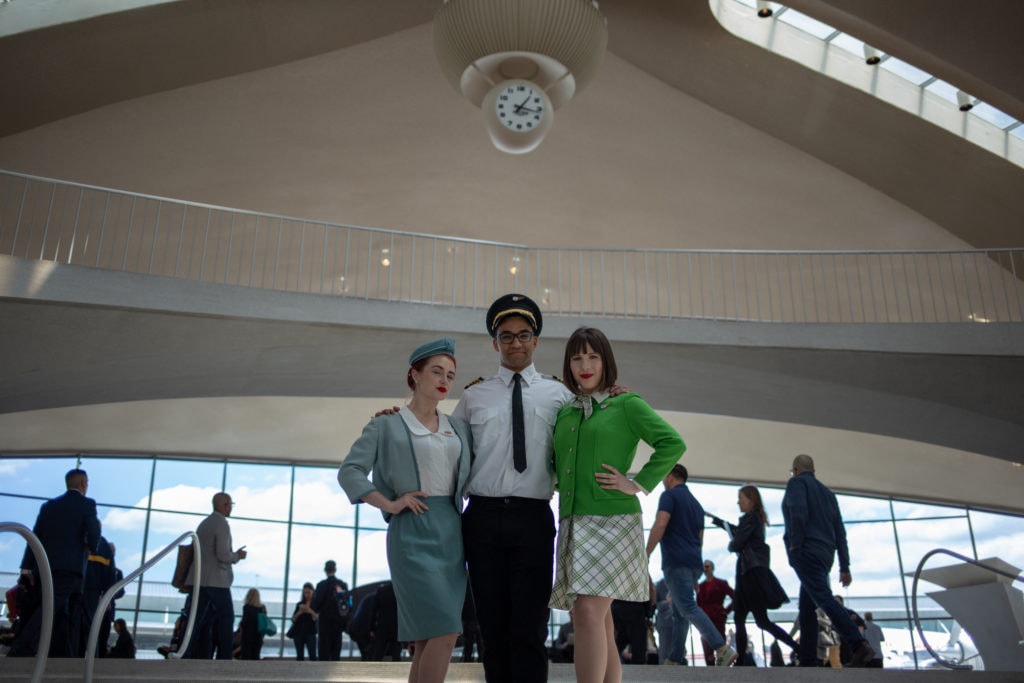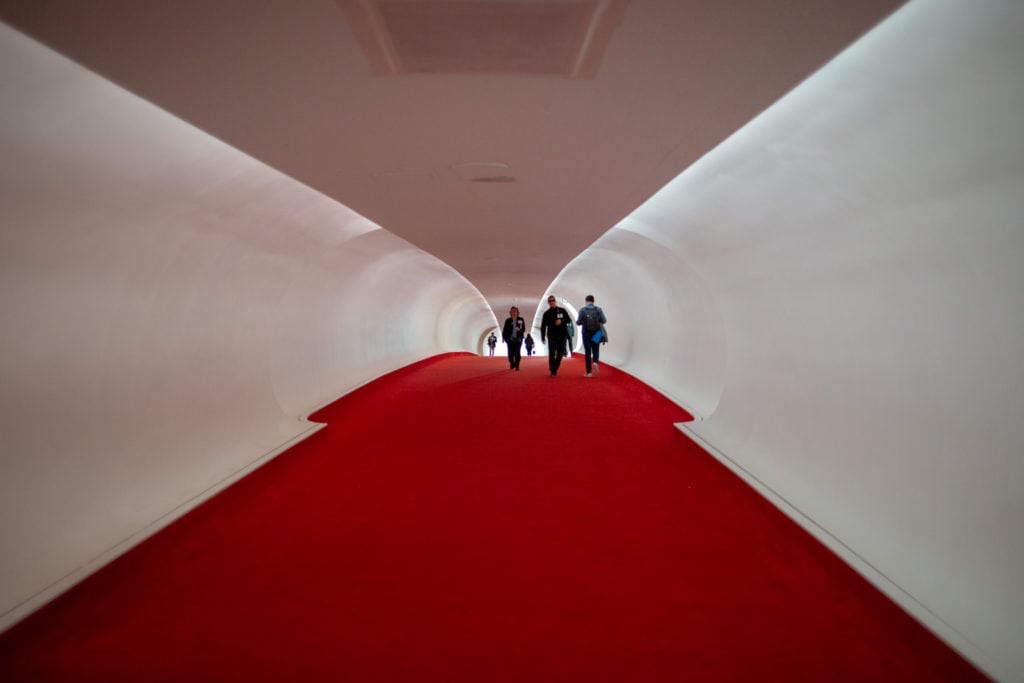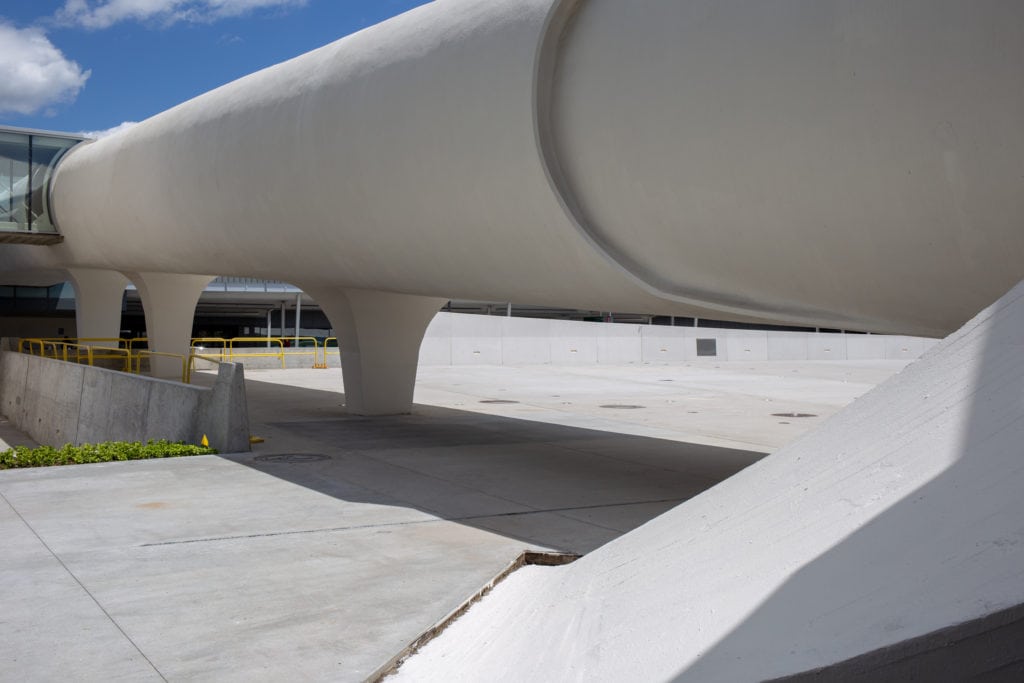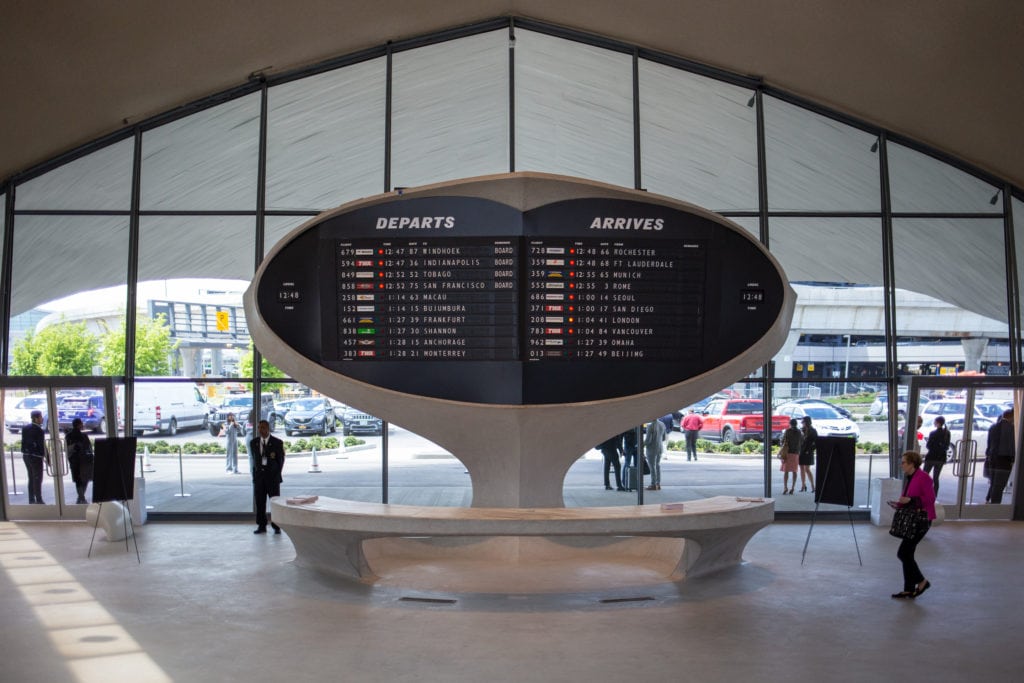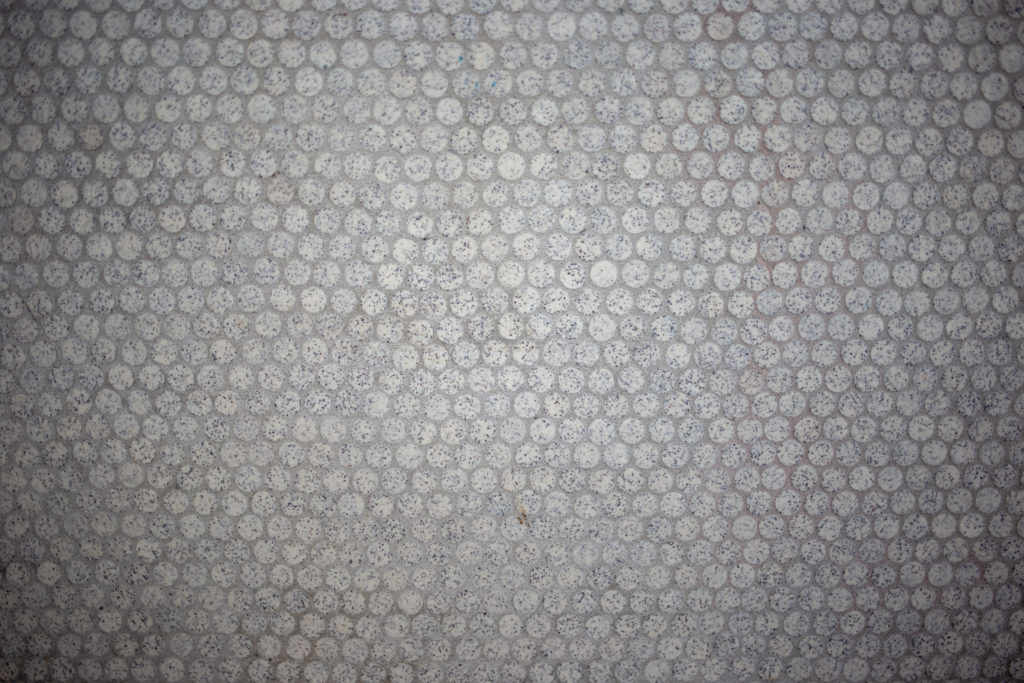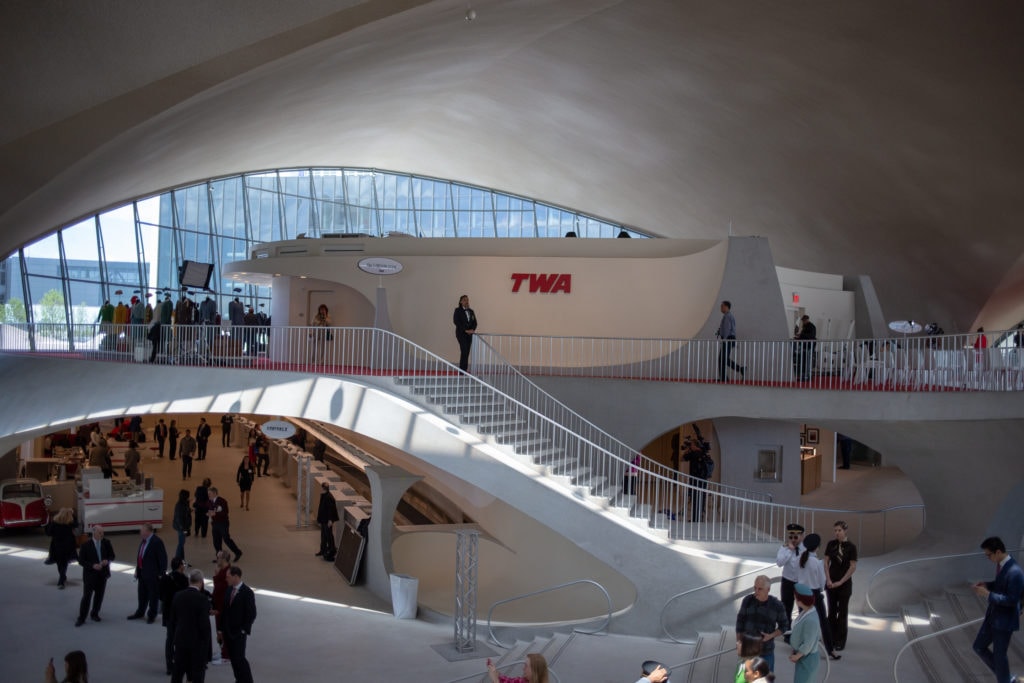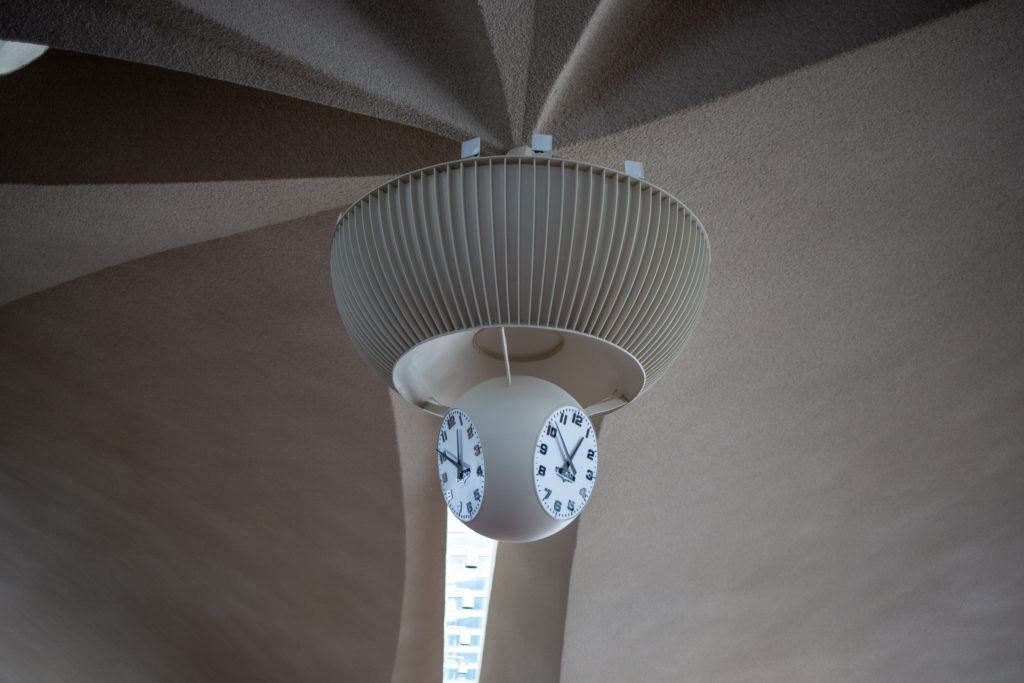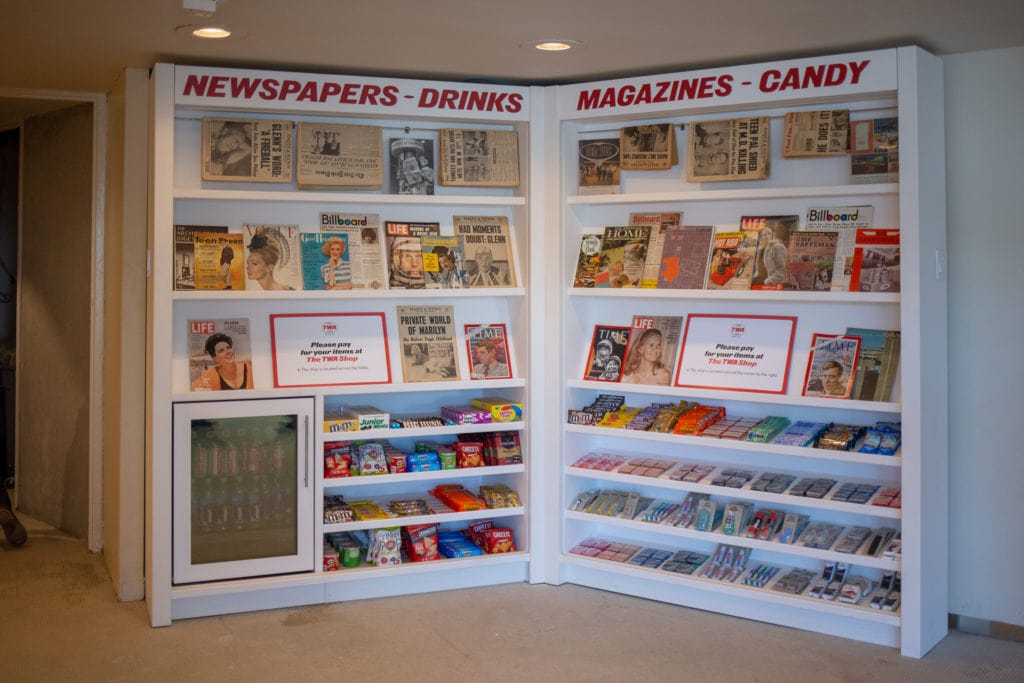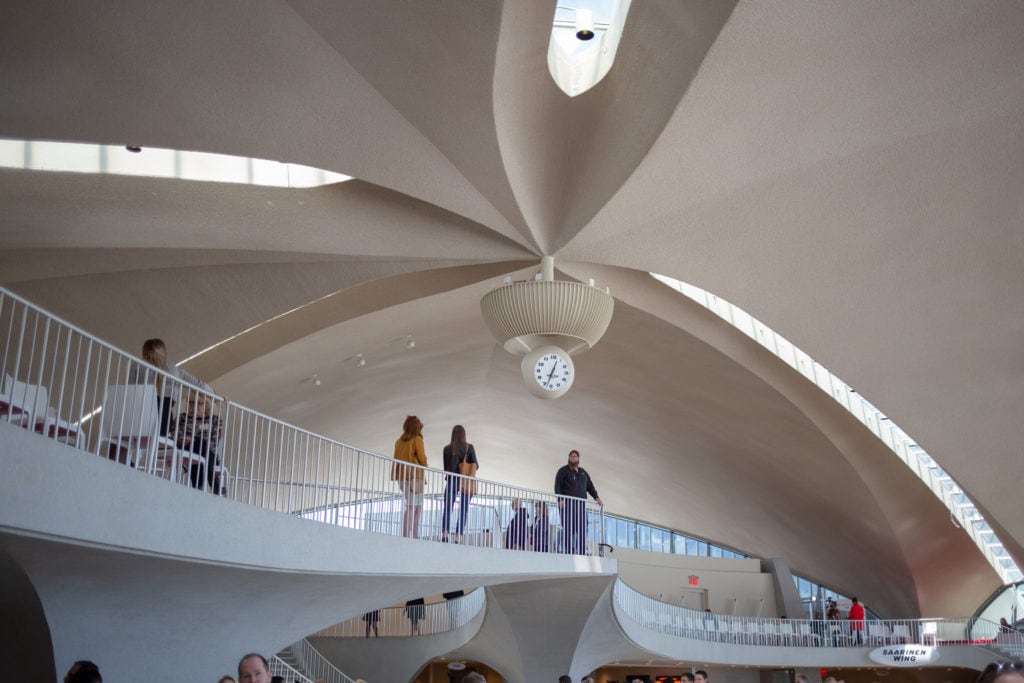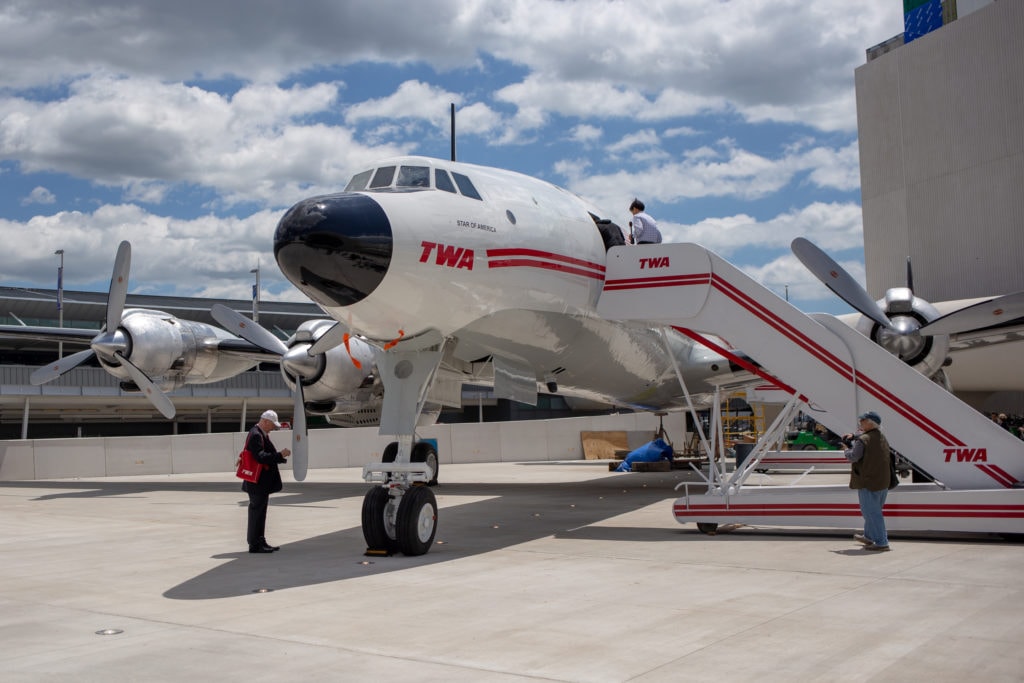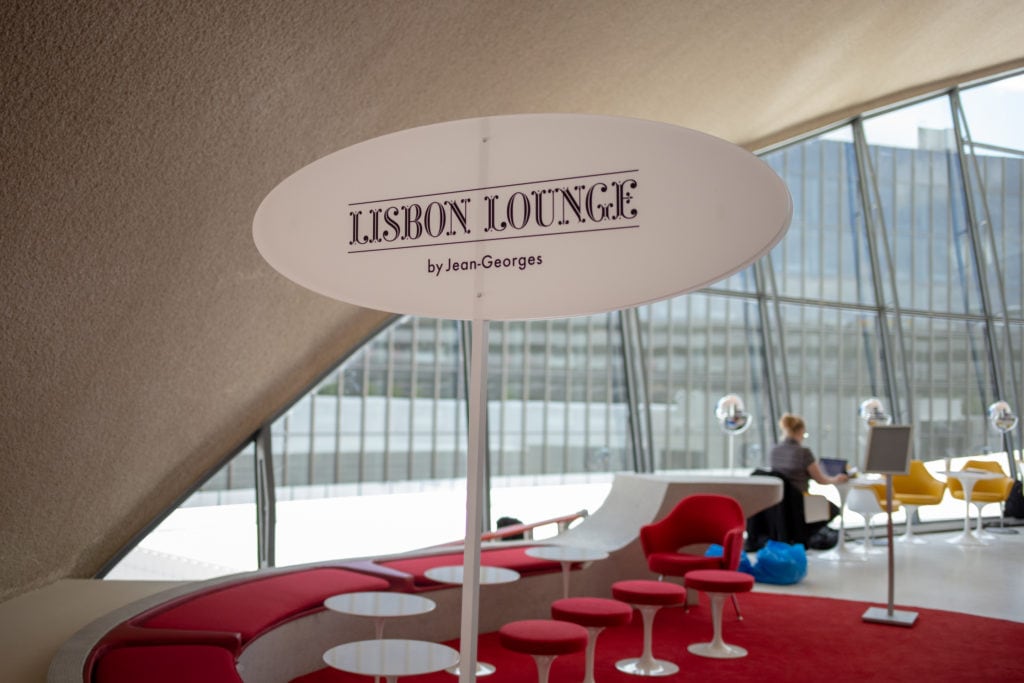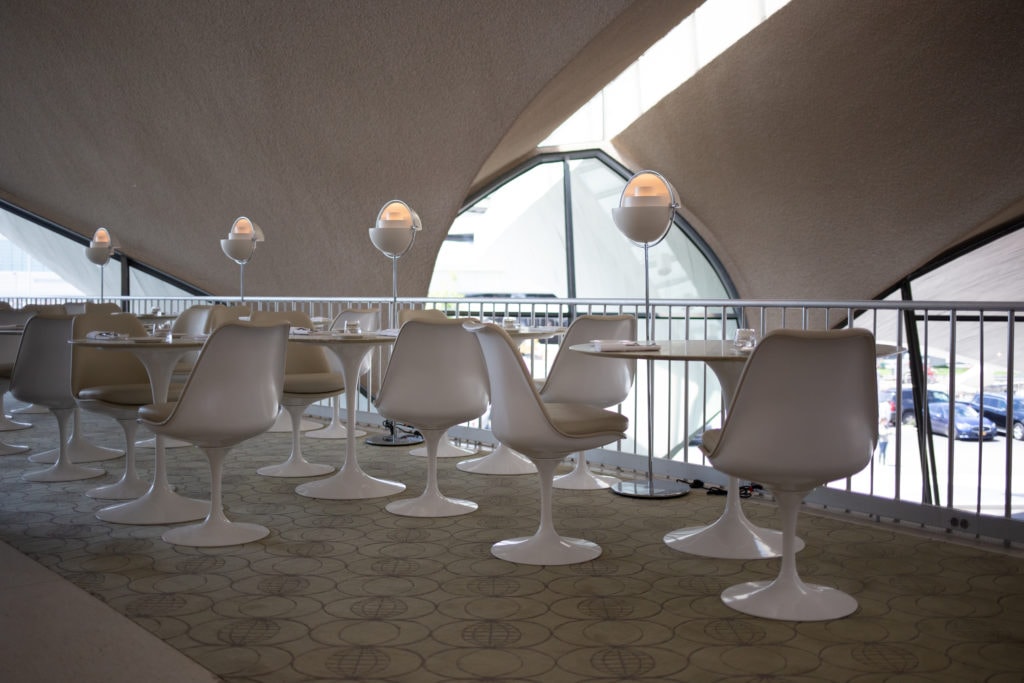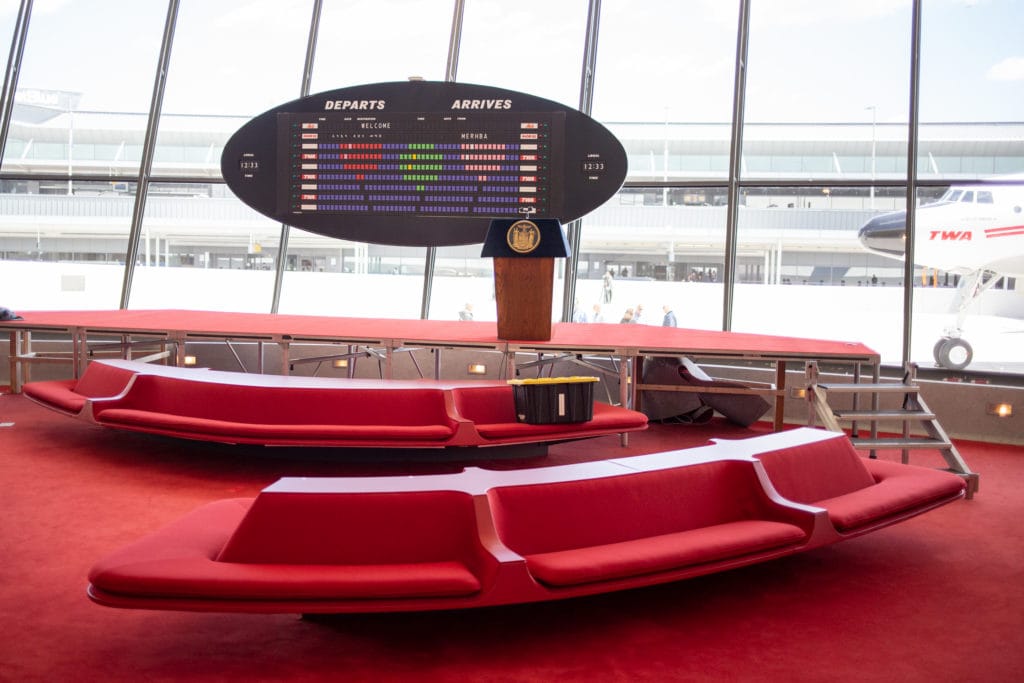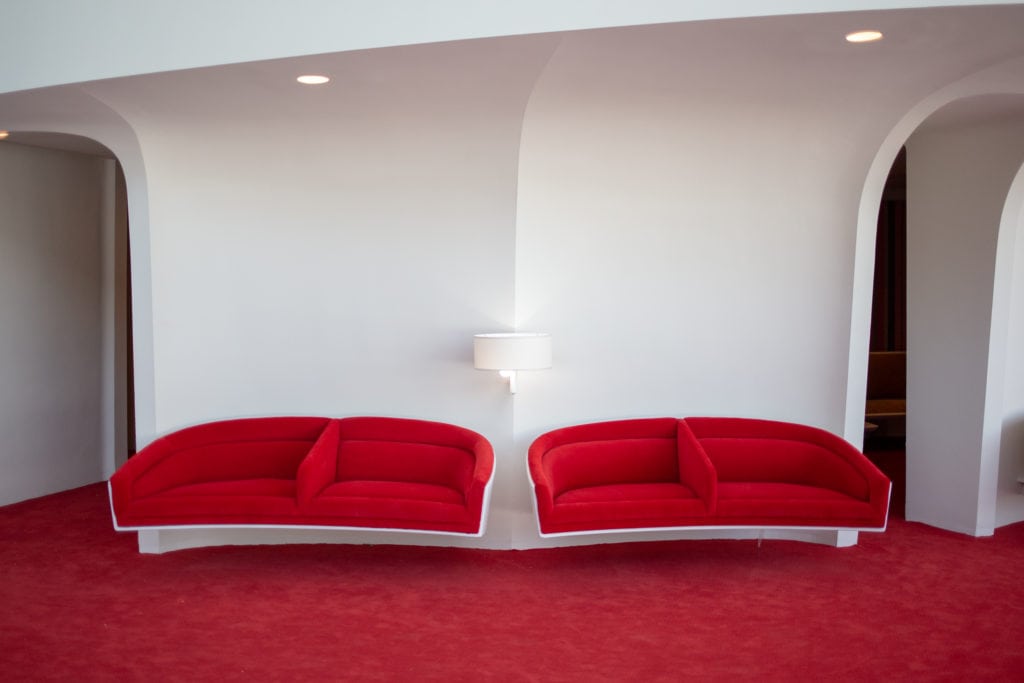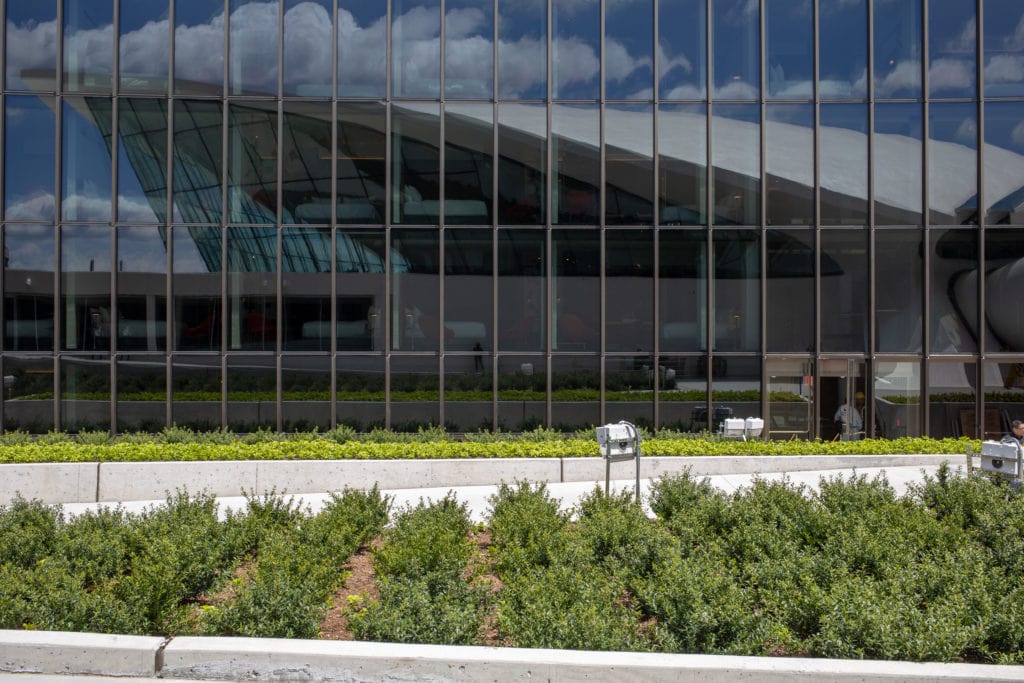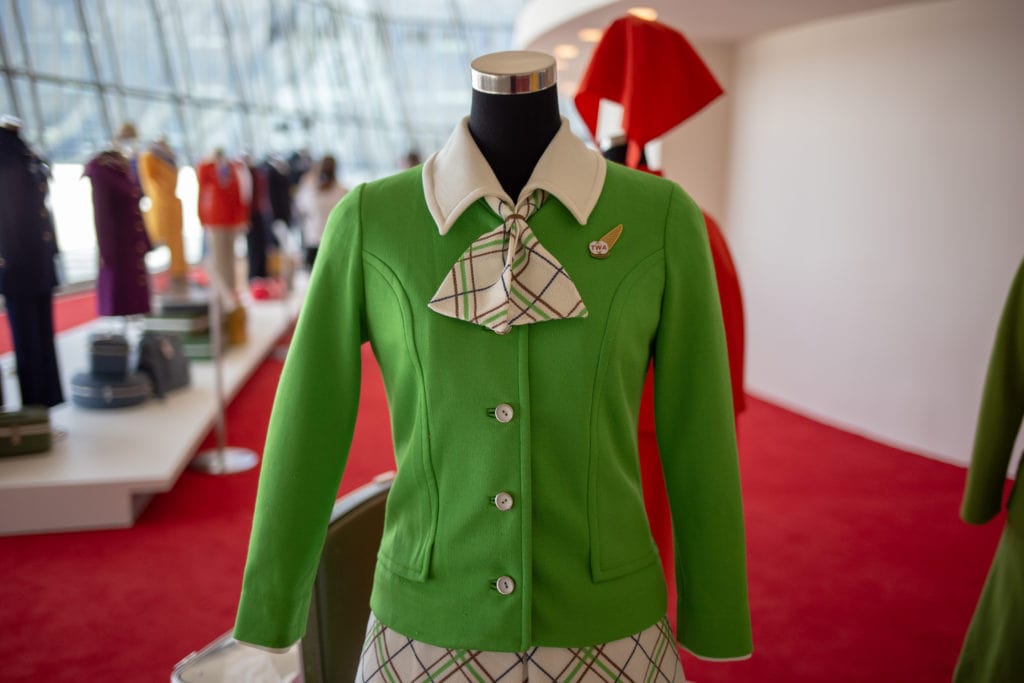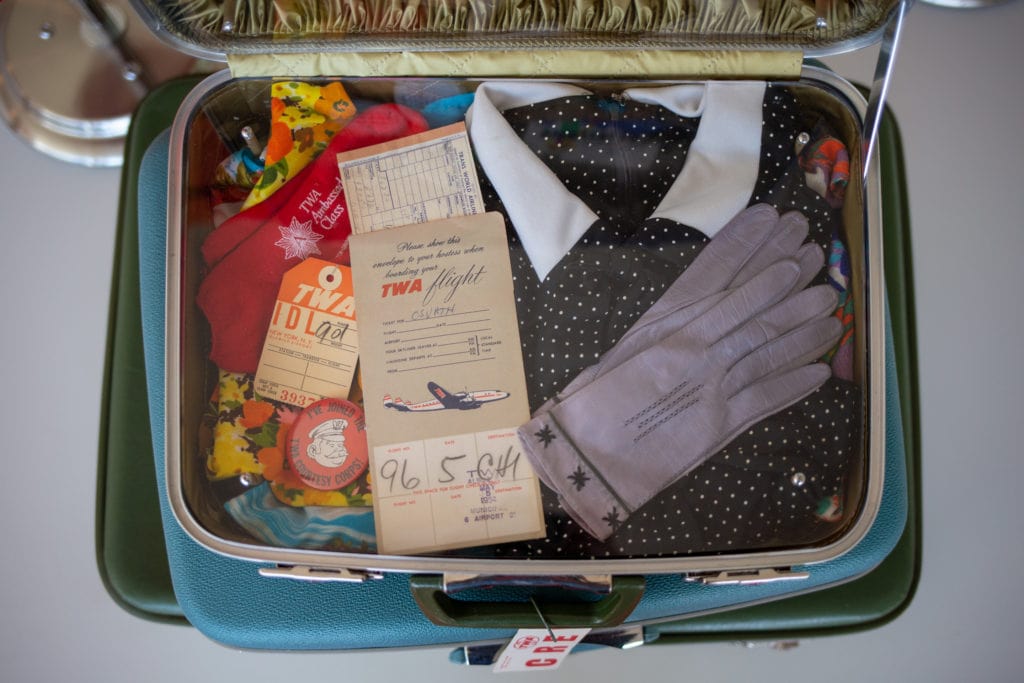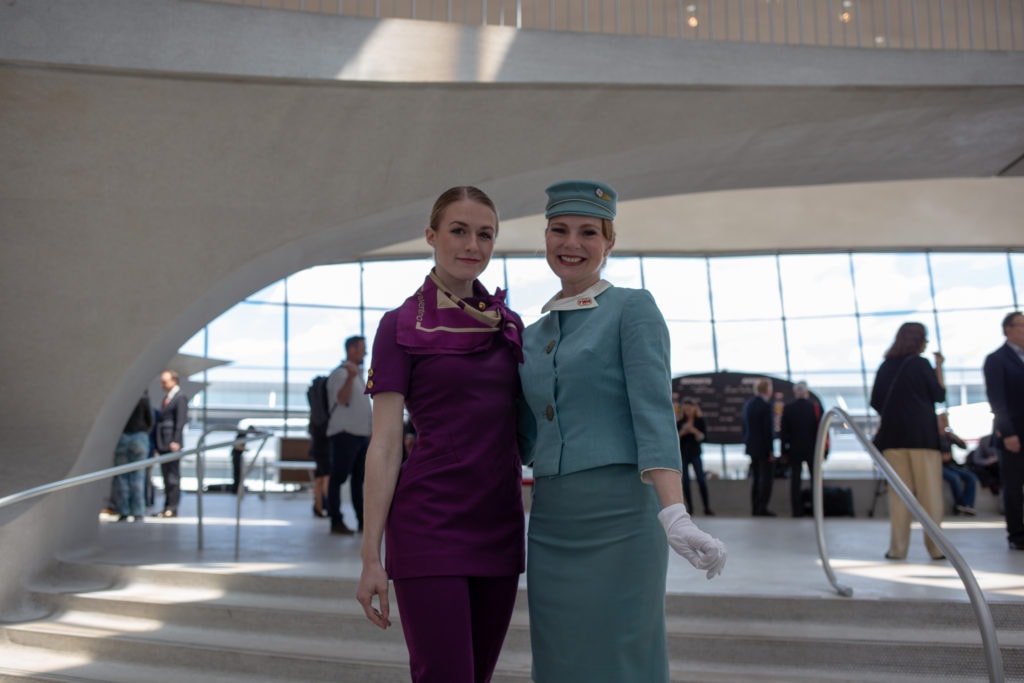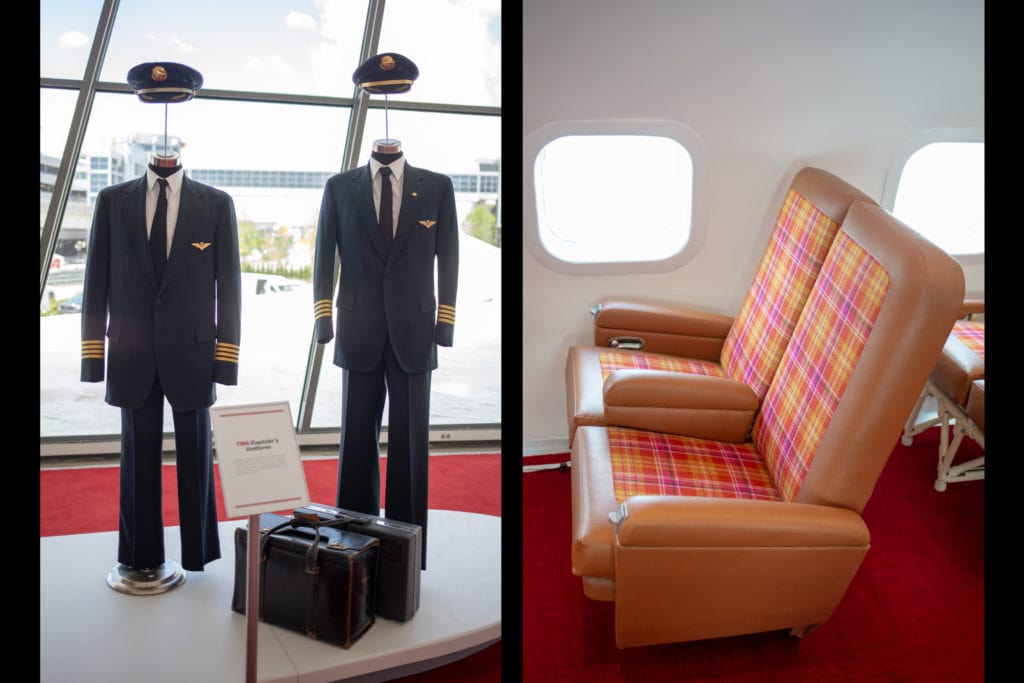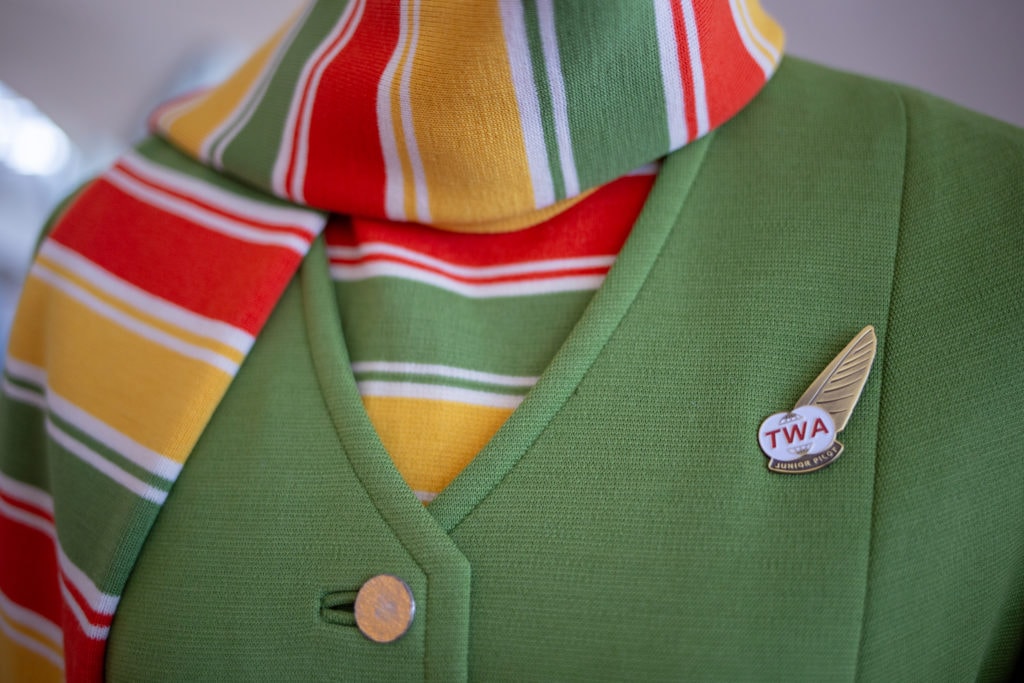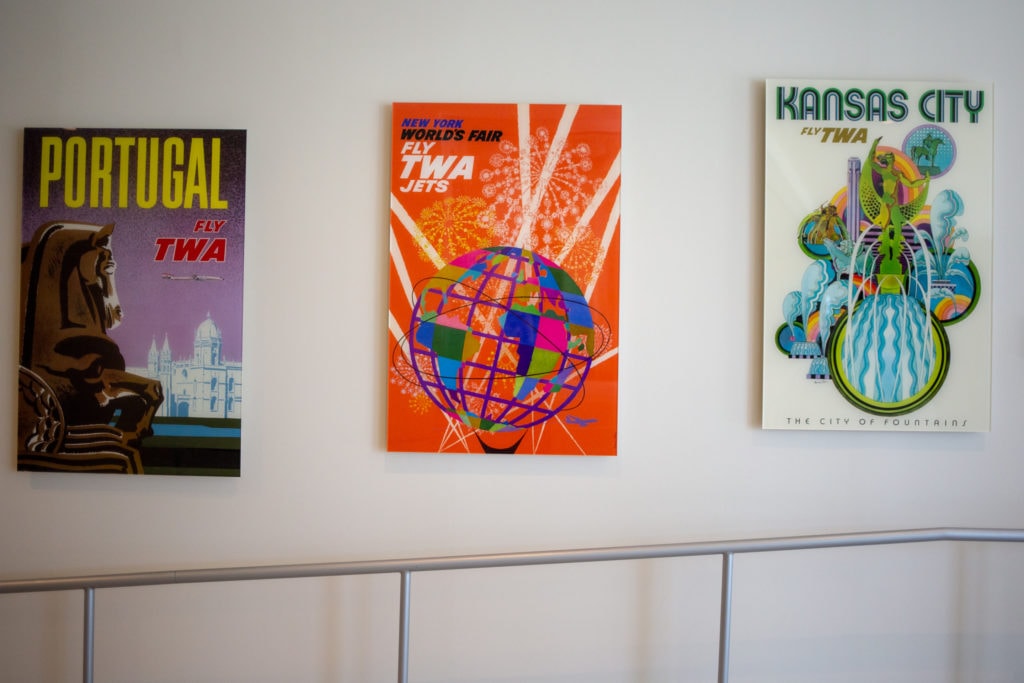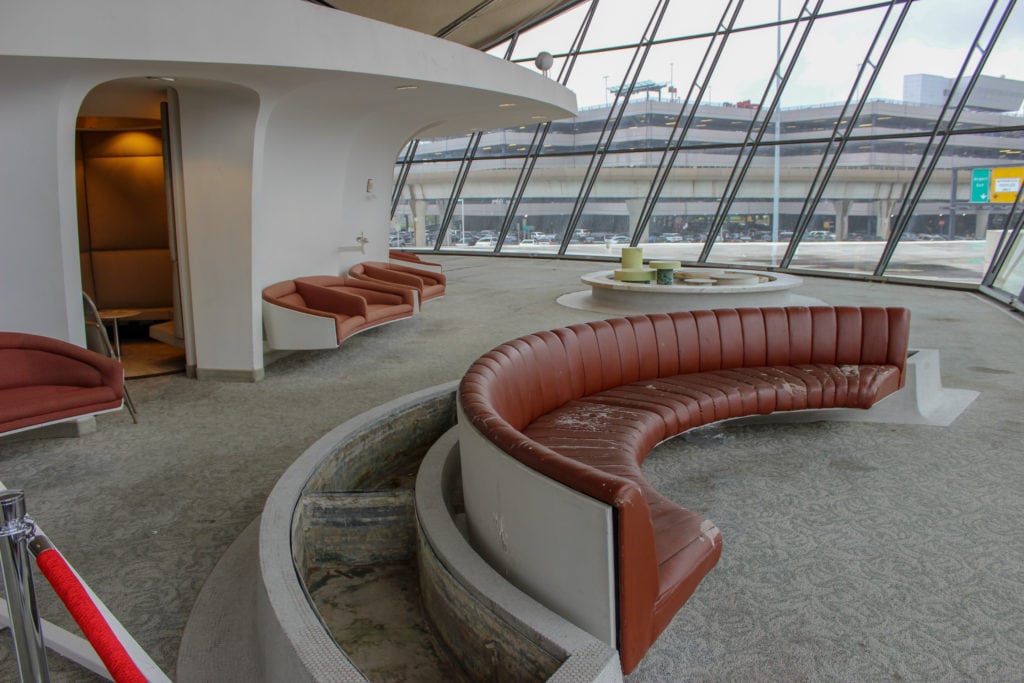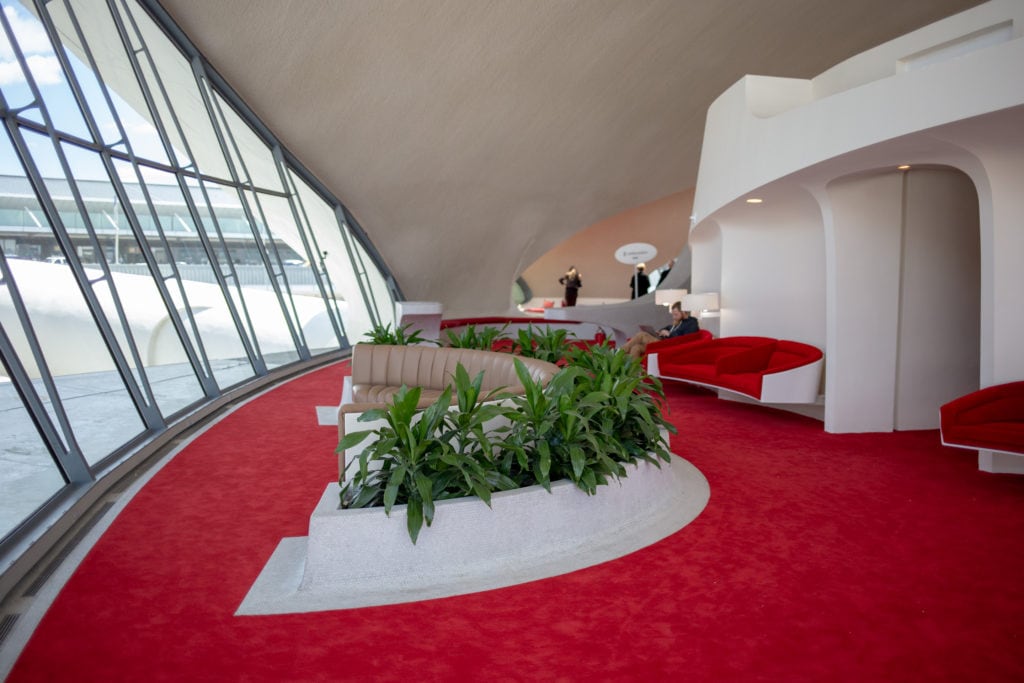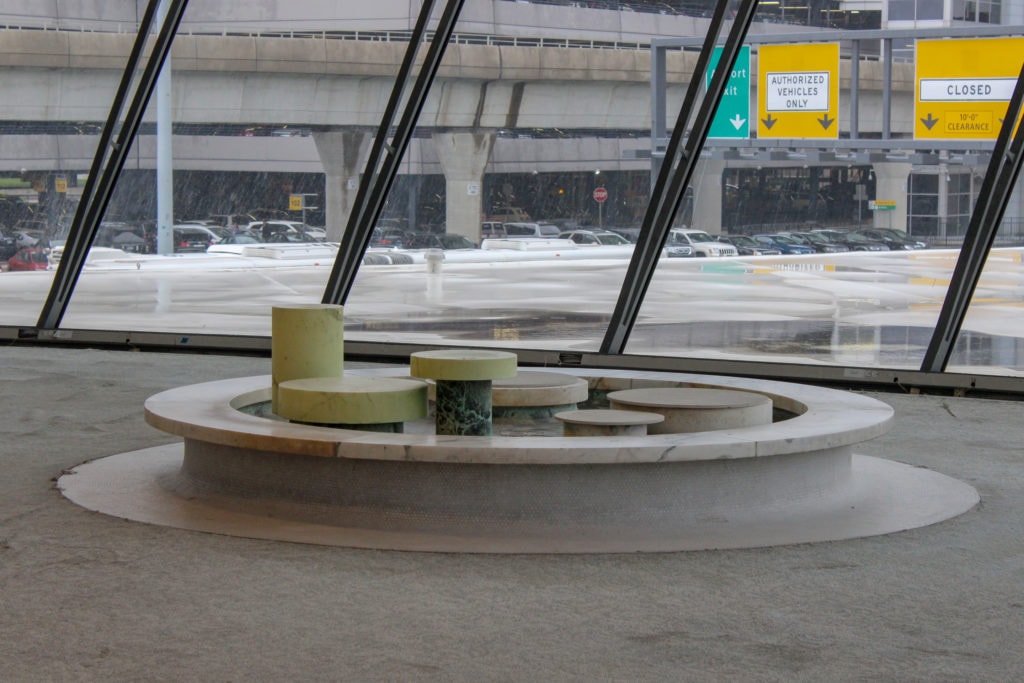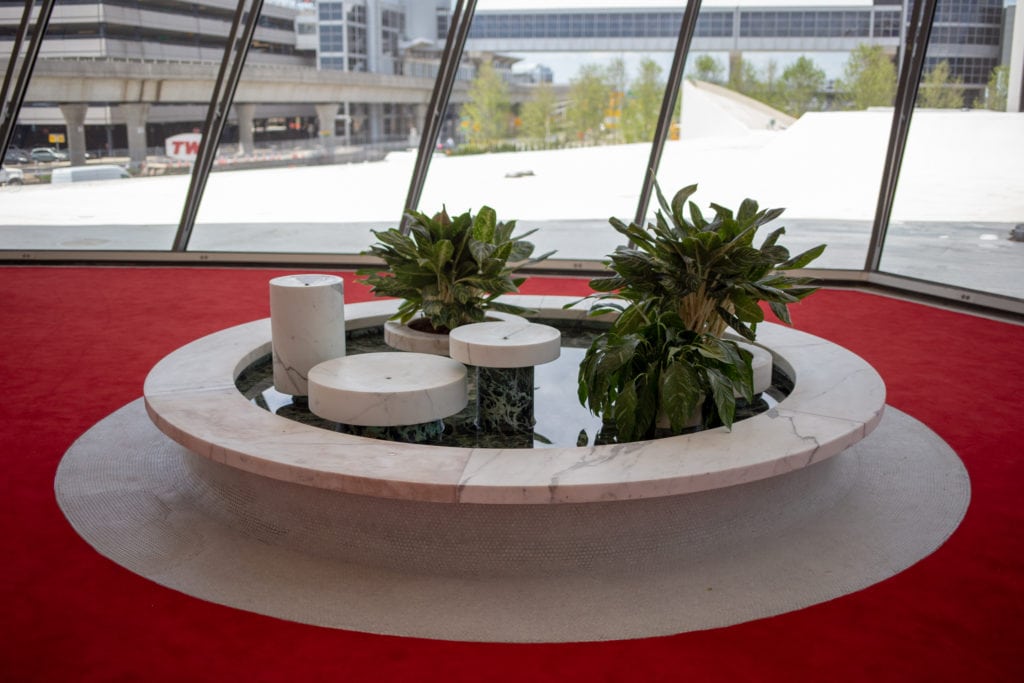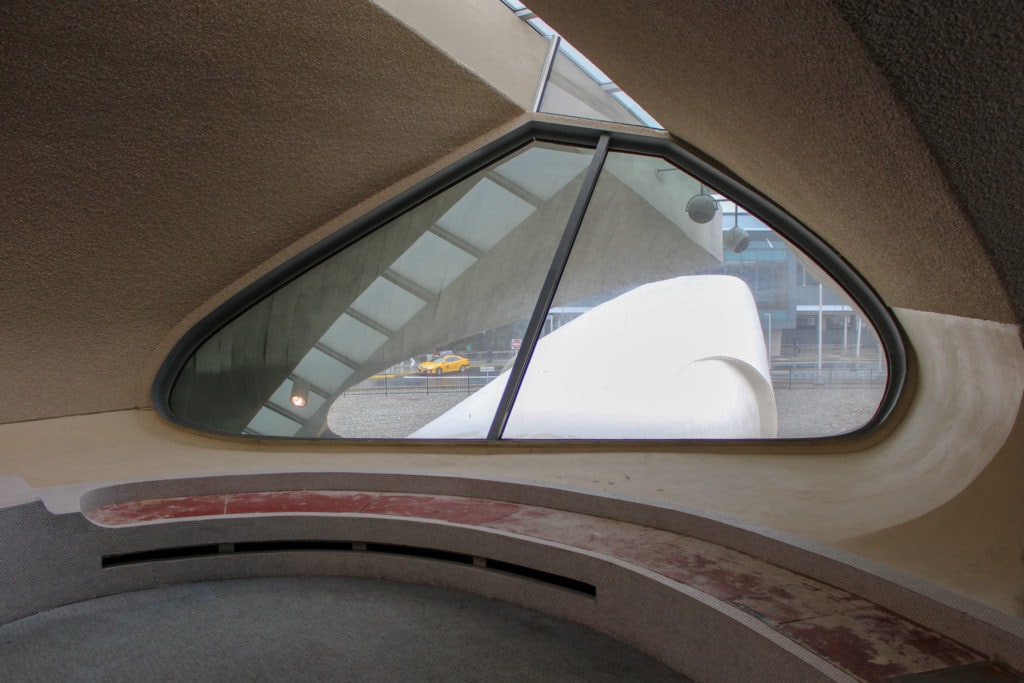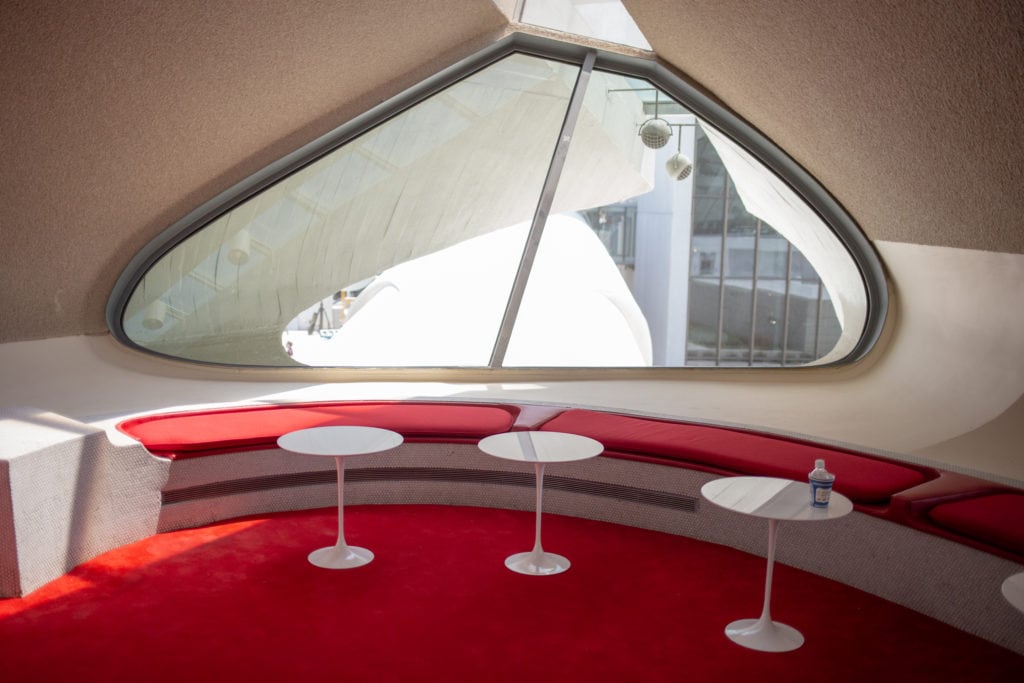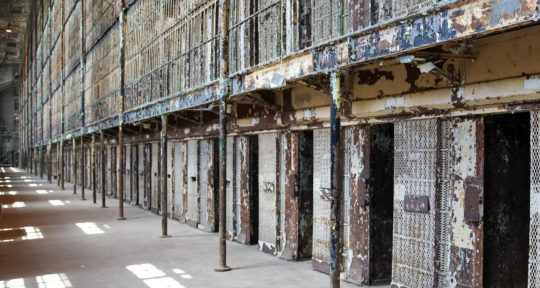The TWA Flight Center opened at JFK Airport in Queens, New York on May 28, 1962. Almost exactly 57 years later, the New York City landmark, designed by Eero Saarinen, began its second life as the central hub of the TWA Hotel and events center.
The terminal—an innovative example of thin-shell concrete-and-glass construction—ceased operations when TWA went bankrupt for a third, and final time, in 2001. In 2016, renovations began on the defunct terminal and two brand new hotel wings were constructed behind it. On May 15, thousands of people attended the opening ceremony, which took place just a few hours before the hotel officially opened its 512 rooms to guests.
The hotel is located behind the terminal. | Photo: Alexandra Charitan It’s easy to feel as if you’ve traveled back to 1962. | Photo: Alexandra Charitan One of the 512 guest rooms. | Photo courtesy of the TWA Hotel Photo: Alexandra Charitan Photo: Alexandra Charitan Photo: Alexandra Charitan
“Eero Saarinen’s cathedral to aviation has always looked toward the future,” says Tyler Morse, CEO and managing partner of MCR and MORSE Development. “We restored and reimagined his landmark with the same care that he devoted to his design. No detail went overlooked—from the millwork by Amish artisans to the custom font inspired by Saarinen’s own sketches to the one-of-a-kind manhole covers. Starting today, the world can enjoy this midcentury marvel for many years to come.”
The opening celebration featured a surprise performance by a Beatles look-alike group. | Photo: Alexandra Charitan Dancers during the flash mob. | Photo: Alexandra Charitan Photo: Alexandra Charitan Photo: Alexandra Charitan Photo: Alexandra Charitan Photo: Alexandra Charitan
The celebration featured a ribbon-cutting by New York Governor Andrew Cuomo, speakers from the hotel and airline industries, and a surprise performance by four Beatles look-alikes in terrible wigs. What the event lacked in snacks, it made up for in vintage details—there were moments when I felt as if I had actually traveled back to the ‘60s just by taking the Airtrain.
Tubes and tiles
I first visited the flight center back in 2014, when it was still empty and its future was uncertain. Lovers of old New York always hold their collective breath whenever the renovation or conversion of a beloved landmark is announced—but I’m happy to report that the many agencies behind the TWA Hotel have managed to bring life back into the terminal without erasing much of what makes it so special.
Tubes connect the TWA terminal to JFK’s Terminal 5. | Photo: Alexandra Charitan The tubes have received a fresh coat of paint. | Photo: Alexandra Charitan
Stepping out of one of the terminal’s famous red-carpeted tubes—which connect visitors to their hotel rooms and JetBlue’s Terminal 5—instantly transports you back to an era when flying was a special event. Travelers today have little choice beyond Auntie Anne’s Pretzels, but people passing through the TWA Flight Center could eat at the Paris Café, have a drink at the Lisbon Lounge, relax by a Noguchi fountain, have their shoes shined, and wait for their flight in the stylish, chili-pepper red, carpeted sunken lounge.
You might recognize parts of the TWA Flight Center from the movie Catch Me if You Can. In the film, Frank Abagnale (Leonardo DiCaprio) first reports for duty as a pilot inside of the iconic building. At the end of the movie he is chased down one of those tubes, which, thankfully, survived the renovation intact.
The new space features two new split-flap boards. | Photo: Alexandra Charitan Nearly every surface of the terminal is covered in penny tile. | Photo: Alexandra Charitan Photo: Alexandra Charitan Clock in the center of the terminal. | Photo: Alexandra Charitan A kiosk stocked with vintage magazines and newspapers. | Photo: Alexandra Charitan Photo: Alexandra Charitan
Light gray penny tiles—smaller than a penny—are everywhere. Not content to be confined to the floor, they continue upwards onto the curving walls and undulating surfaces. The upholstery—TWA red, like the carpet—has received a refresh, and the space contains two authentic split-flap boards manufactured by Solari di Udine.
New amenities added to the hotel include a watch bar and leather goods store, a Warby Parker Pencil Room, the world’s biggest hotel gym, a reading room, 50,000 square feet of event space with a 15,000-square-foot ballroom, a gift shop selling TWA apparel, and BLADE helicopter service to Manhattan.
The TWA Hotel has also made sure that visitors don’t miss out on everyone’s favorite ‘60s activity—drinking—by ensuring that guests are never more than a few feet from a cocktail. They’ve combined the Paris Café and the Lisbon Lounge, turned the sunken lounge into a cocktail bar, and converted a Lockheed Constellation L-1649A plane—dubbed “Connie”—into a cocktail lounge. The rooftop infinity pool is surrounded by an observation deck with yet another bar, offering views of planes arriving and departing from nearby runways.
“Connie,” a Lockheed Constellation L-1649A plane has been converted into a cocktail lounge. | Photo: Alexandra Charitan Sign for the Lisbon Lounge. | Photo: Alexandra Charitan The Paris Cafe. | Photo: Alexandra Charitan The sunken lounge. | Photo: Alexandra Charitan Photo: Alexandra Charitan Two new wings were built behind the terminal to house the hotel rooms. | Photo: Alexandra Charitan
The building itself is a gleaming white tribute to the beauty of flight—impressive in both Saarinen’s vision and in its actual execution. Like other great feats of architecture, it seems to defy the laws of physics, appearing as if it might actually be capable of flying itself. It straddles architectural styles—Futurist, Googie, Fantastic—and feels both like a relic from the past and a vision of the future.
The golden age of flight
TWA uniform pieces from the 1940s to the 1990s are currently on display in the terminal, including pilot’s hats, serving smocks, luggage, and hostess outfits designed by Pierre Balmain, Oleg Cassini, Ralph Lauren, and Valentino. At the event, former flight attendants and models wearing vintage outfits mixed into the crowd of journalists, further blurring the lines between past and present.
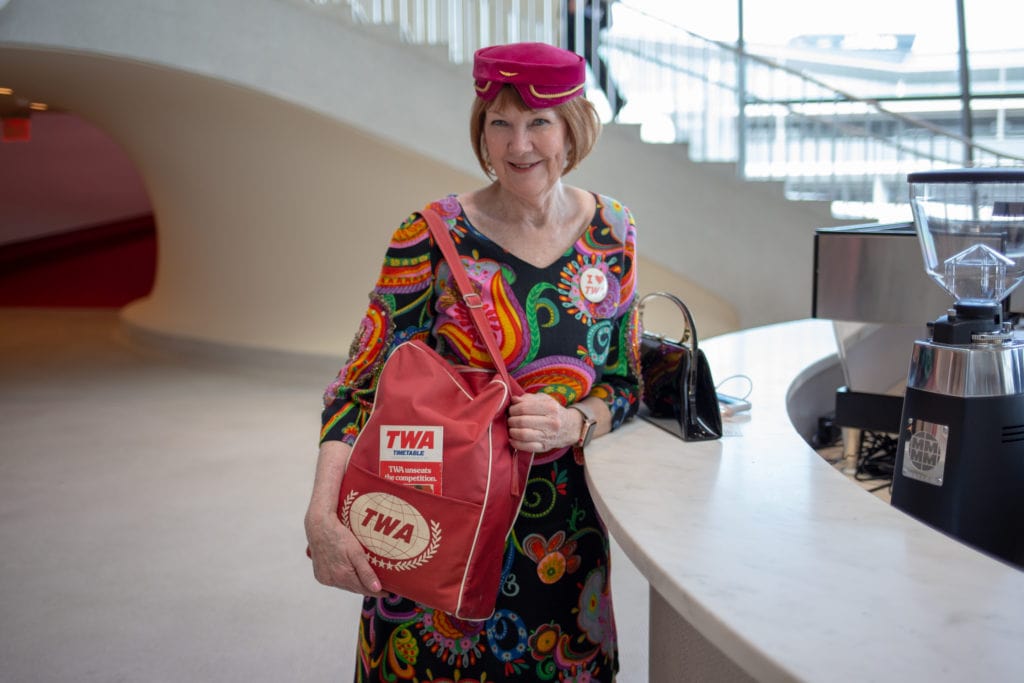
Billie O’Hagan, a flight attendant with Alaska Airlines, made her hotel reservation for opening night back in February. She prepared two separate, vintage outfits for her brief stay, including a velvet pink pillbox hat adorned with tiny, gold TWA wings. “I wanted to celebrate and honor the history of TWA,” she says.
Trans World Airlines, which operated from 1930 until 2001, was once one of the major American airlines. In 1939, Howard Hughes acquired control of the company, which flew to Europe, the Middle East, and Asia. Its decline, which began with the passage of the Airline Deregulation Act in 1978, was hastened by the explosion of TWA Flight 800 in 1996. In 2001, the bankrupt company was acquired by American Airlines.
Photo: Alexandra Charitan Photo: Alexandra Charitan Vintage TWA uniforms. | Photo: Alexandra Charitan Pilot’s uniforms and plaid seats. | Photo: Alexandra Charitan A vintage TWA flight attendant uniform. | Photo: Alexandra Charitan A hallway is lined with vintage TWA posters. | Photo: Alexandra Charitan
“I got to witness the demise of TWA as a company, which was really sad,” says O’Hagan. Although she never worked for the company, she says that she was lucky enough to walk through the flight center when it was still active. “I’m glad they didn’t change much,” she says. “I love that they even kept the stains on the tile.”
Like any building with a history, those stains represent stories—of passengers and pilots, of bartenders and businessmen, of families and flight attendants, who for some reason or another found themselves thrown together in an airport terminal.
Buildings don’t have to be memorable to be functional, but when Saarinen designed the TWA flight center, he proved that a great architect conceives of a building that is both. Visitors to the TWA Hotel may actually forget for a moment that the golden age of air travel is very much behind us—until they need to catch their flight and are forced to take one of those time-traveling tubes back into the present.
One of the seating areas in 2014 before it was restored. | Photo: Alexandra Charitan Seating area, 2019. | Photo: Alexandra Charitan Noguchi fountain, 2014. | Photo: Alexandra Charitan Noguchi fountain, 2019. | Photo: Alexandra Charitan An un-restored corner of the terminal in 2014. | Photo: Alexandra Charitan Seating corner, 2019. | Photo: Alexandra Charitan
If you go
The TWA Hotel is located at JFK Airport. Take the Airtrain to Terminal 5. Reservations can be made for the hotel, restaurant, and bars online now.
